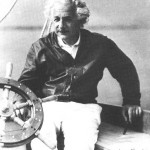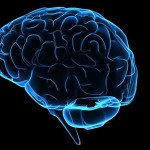 Most of what I do on stage looks like mind reading. In order to predict how you will react, I need to know if you are an outside the box thinker or not. From the moment you walk on stage with me, I have to know if you are the “creative” type. To figure out what you are thinking, I need to identify what kind of process your brain usually follows. But how do you figure out if someone is more creative at first glance (and what does that have to do with Einstein)?
Most of what I do on stage looks like mind reading. In order to predict how you will react, I need to know if you are an outside the box thinker or not. From the moment you walk on stage with me, I have to know if you are the “creative” type. To figure out what you are thinking, I need to identify what kind of process your brain usually follows. But how do you figure out if someone is more creative at first glance (and what does that have to do with Einstein)?
Two little known facts about Einstein: 1. He loved to sail 2. He couldn’t swim. Psychologists know the hidden connection between risk and creativity. Creativity means making something from nothing, taking a risk by thinking thoughts that might end up being wrong, a waste of time. For every great thought Einstein had, there were a hundred dumb ones. However, there’s even neurological proof that risk takers are more creative.
 From a neurological point of view, creative thinking relies on long distance connections in the brain–accessing unconnected databases. Whenever we encounter risky situations, the brain works overtime to maximize survival by gathering the most information possible. Risks form the habit of using long distance synapses. Simply put, taking risks is like exercising your “creative muscle.” So how does all that information help me know what you are going to think?
From a neurological point of view, creative thinking relies on long distance connections in the brain–accessing unconnected databases. Whenever we encounter risky situations, the brain works overtime to maximize survival by gathering the most information possible. Risks form the habit of using long distance synapses. Simply put, taking risks is like exercising your “creative muscle.” So how does all that information help me know what you are going to think?
 When a person comes up on stage, their reaction to this fairly intimidating situation can show that they are outgoing by nature, a natural “risk taker.” That fact, combined with a few other tools can instantly tell me if they think creatively or not. Something I do often is guess what someone would draw. Based on statistics, this quick personality assessment, and some subtle influence I can usually guess with 85% accuracy what they would draw.
When a person comes up on stage, their reaction to this fairly intimidating situation can show that they are outgoing by nature, a natural “risk taker.” That fact, combined with a few other tools can instantly tell me if they think creatively or not. Something I do often is guess what someone would draw. Based on statistics, this quick personality assessment, and some subtle influence I can usually guess with 85% accuracy what they would draw.

 Combining psychology, showmanship, and misdirection Nathan Thomas creates an interactive experience where the audience alternates between laughter and deep astonishment. His psychological illusions cross the line from possible to impossible, providing a real sense of mystery. Sleight of Mind is unforgettable, an experience unlike any other.
Combining psychology, showmanship, and misdirection Nathan Thomas creates an interactive experience where the audience alternates between laughter and deep astonishment. His psychological illusions cross the line from possible to impossible, providing a real sense of mystery. Sleight of Mind is unforgettable, an experience unlike any other.
No Responses to “Risks, creativity, and Einstein”
Trackbacks/Pingbacks